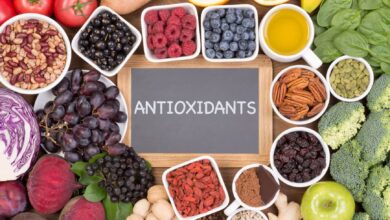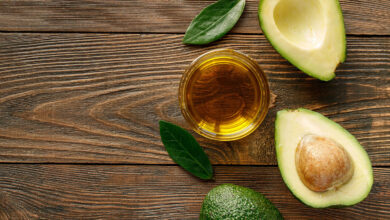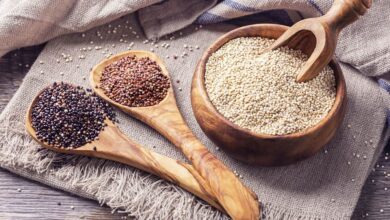20 Meatless High Protein Foods | Good Sources Of Protein
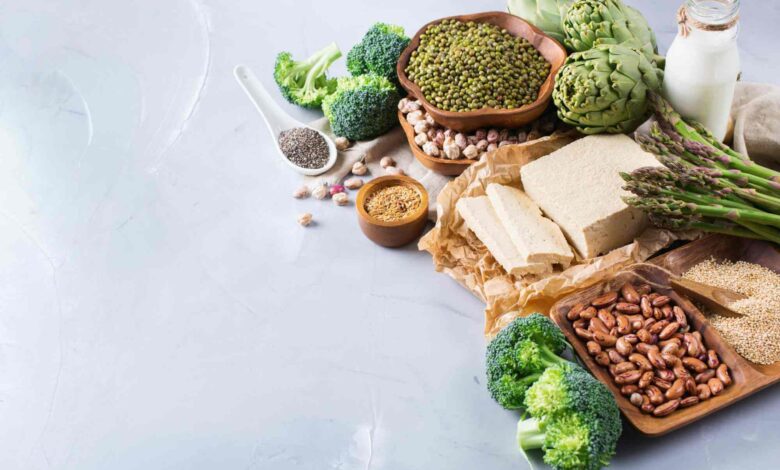
We’ve ranked the best meatless high protein foods in terms of their protein content. You don’t have to go vegetarian or vegan to reap the benefits often attributed to those lifestyles, including reduced risk of heart attack and cancer.
Simply cutting back on the amount of meat you eat each day can help. With the following meatless options you’ll still be getting plenty of protein in your diet, so you won’t have to worry about suffering from symptoms associated with low protein levels, including muscle pains, low energy, and trouble sleeping.
These are the best vegetarian sources of protein. Check out the top 20 good sources of protein that aren’t meat, ranked in order from highest to lowest in protein per 100 grams.
Meatless High Protein Foods – Sources of Protein that aren’t Meat
1. Seitan – 75g per 100g
Blowing away the competition is seitan, also known as wheat gluten, which is made up of 75% protein. That’s pretty impressive, and 100g of it provides more than your daily requirement of protein.
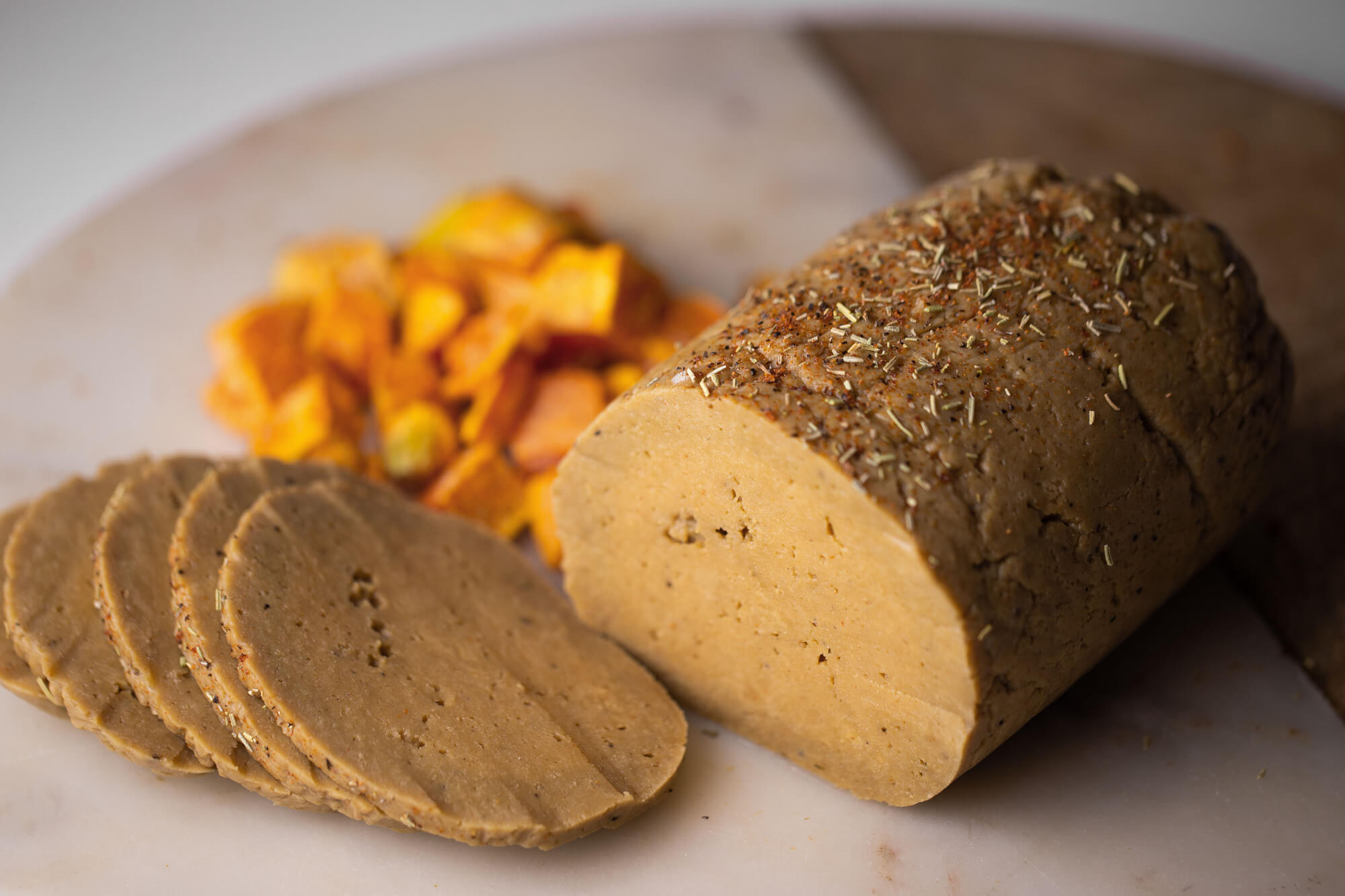
Added features include it being low in sodium and carbohydrates, high in iron, and a good source of calcium. It’s also very low in fat, which makes it a great addition to many diet programs as a way to get protein with no cholesterol and not much fat added.
As the name wheat gluten suggests, you wouldn’t want to eat this on a gluten-free diet because it’s made of the exact stuff that you’re trying to avoid when eating gluten free.
Ideas for eating more seitan: Seitan makes a great replacement for chicken or turkey, so use it in any dish that calls for these for a fantastic tasting alternative with plenty of protein.
2. Lentils – 26g per 100g
If you’re not eating lentils on a regular basis, you may want to start. They have an surprising amount of protein in them, taking the number two spot on our list.
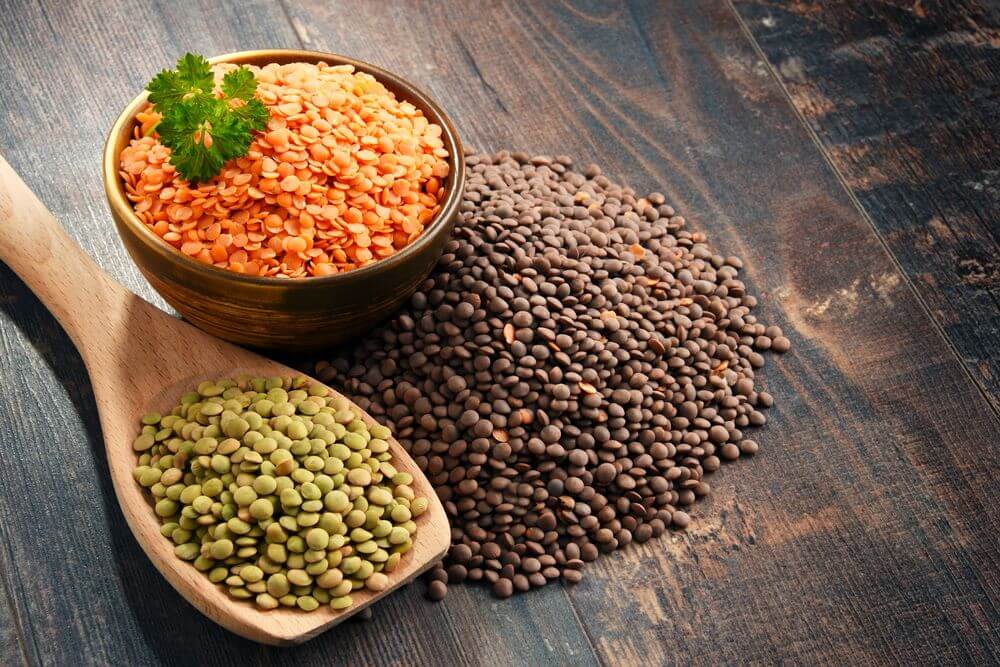
Lentils pack a ton of fiber, so in the same 100 gram serving that nets you 26 grams of protein you’re getting your entire day’s worth of fiber met. You probably wouldn’t eat that serving size in one sitting, but adding it to your diet in any amount is going to be a big plus.
Lentils are also rich in important minerals like iron and magnesium, as well as potassium. They are also low in fat and sodium, and are cholesterol free.
Ideas for eating more lentils: Lentils are very versatile, and can be eaten as a side dish all by themselves, added to mixed vegetables, or mashed up and made into patties. They work great at thickening up a soup as well, and try adding them to a chili for added nutrition.
3. Peanut Butter – 25g per 100g
Here’s a yummy alternative to meat that contains plenty of protein. Peanut butter is one quarter protein, and can contribute to your overall protein needs, and tastes great which means you’ll have no trouble eating it regularly.
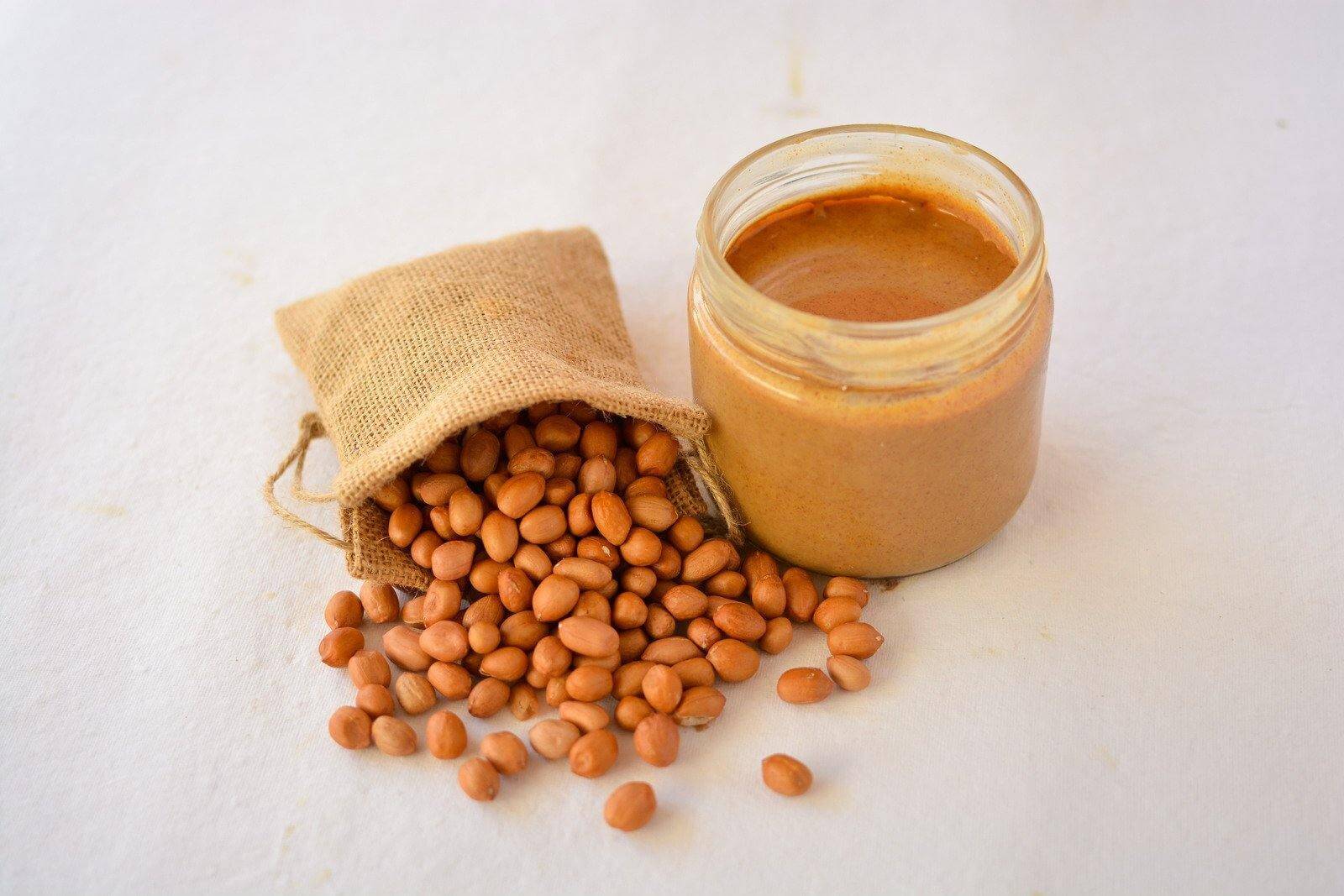
Peanut butter is also high in potassium and a good source of fiber, and also contains magnesium and potassium to help the body function at its best. It also contains Vitamin B-6, which will help benefit the liver as well as several other metabolic processes.
If you’re looking to lose weight you’ll want to make sure not to overdo it with peanut butter, as it is high in fat. Just the right amount can spur on your weight loss efforts, too much will be counterproductive.
Ideas for eating more peanut butter: Add peanut butter to a smoothie for an improved taste and to thicken it up. Use it to dip apples and celery for a healthy snack.
4. Hemp Seed – 23g per 100g
Hemp seeds take the number four spot on our countdown, and they provide plenty of protein, gram for gram. The protein they contain is easily digested by the body, and they have an anti-inflammatory effect, making them a great choice for anyone suffering from a condition caused by inflammation.
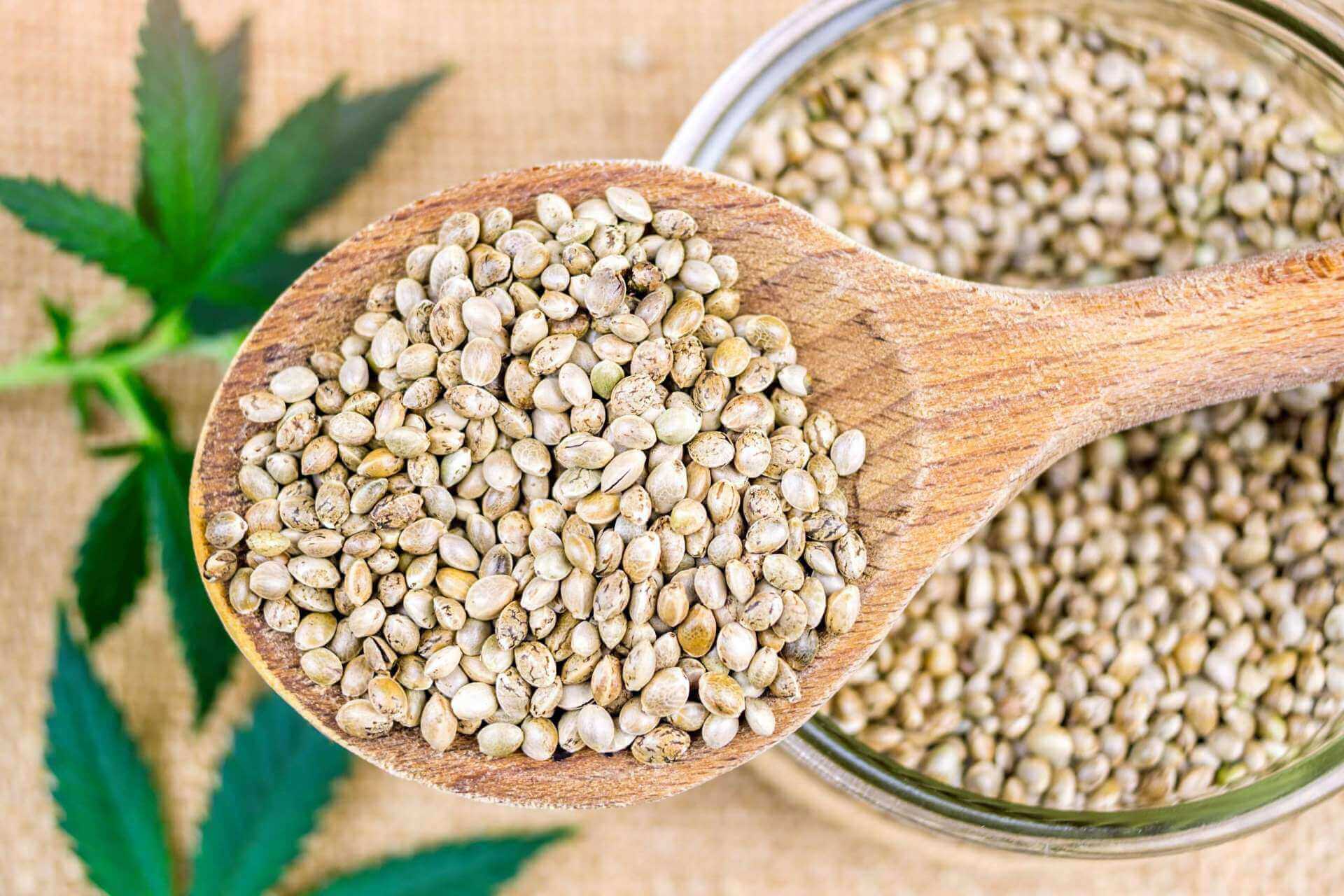
You may have to go to a health food store or order online in order to find hemp seeds locally. The good news is that they’re not prohibitively expensive, even for a high quality, organic brand.
Hemp seeds won’t provide any psychoactive effect, even though they come from the same marijuana plant as the recreational drug. You can buy them and use them without concern of any laws or penalties.
Ideas for eating more hemp seed: You can add hemp seeds to just about anything, including soups, salads, smoothies, and more thanks to their small size and nutty flavor.
5. Black Beans – 21g per 100g
Black beans have been gaining in popularity over the years as a healthy side dish, but vegetarians and vegans have known just what a great source of protein they are for quite some time.
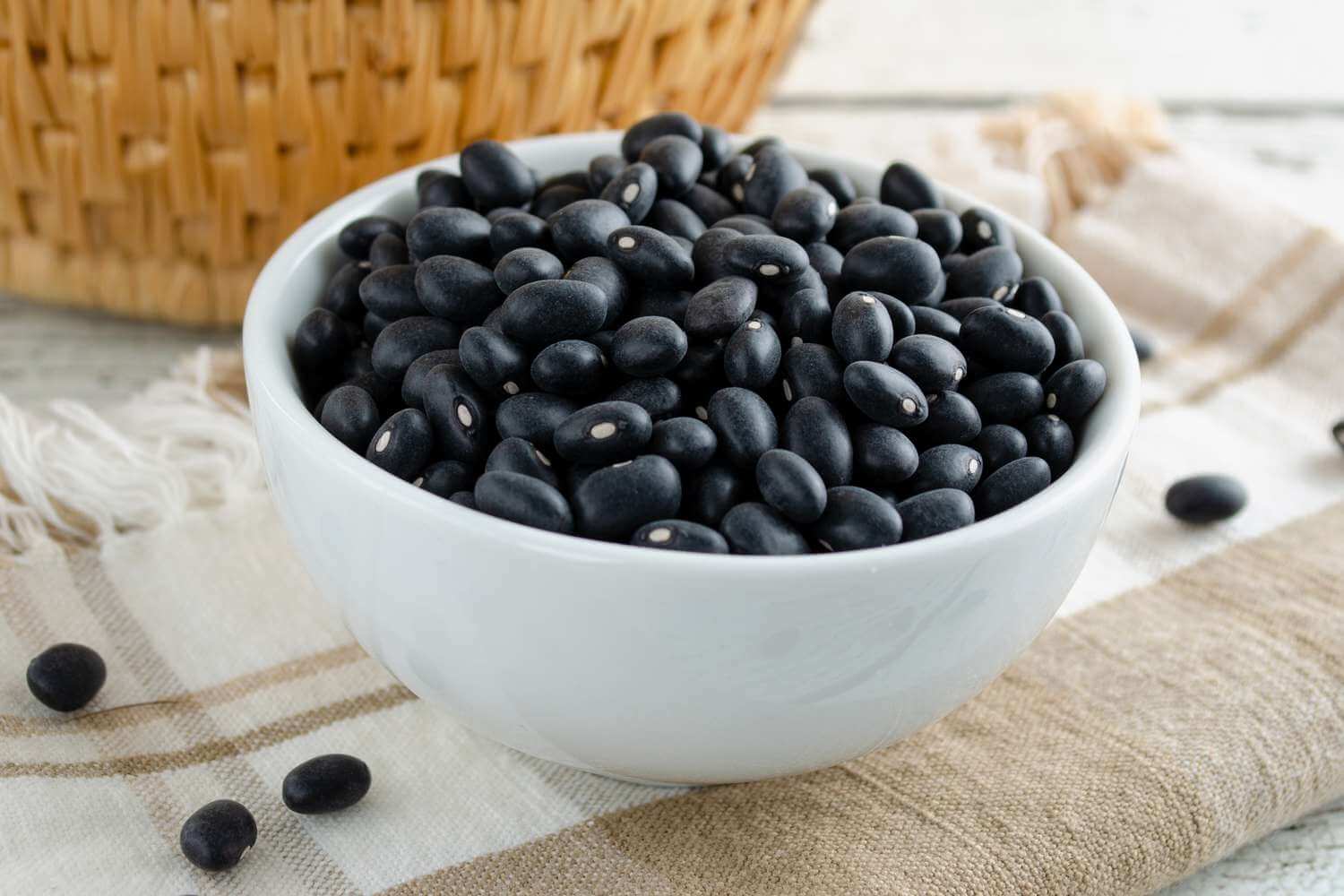
Black beans are often recommended to those with diabetes as they help to maintain healthy blood sugar levels. They are digested gradually by the body, and can help you feel fuller longer. They also help the digestive tract because of their ratio of protein and fiber.
You can use black beans as part of a weight loss program or weight management efforts because of their low fat content and healthy mix of fiber and protein.
Ideas for eating more beans: Black beans are so versatile that they can easily be incorporated into meatless main dishes, used as a side dish, added to a stir fry, used in any number of Mexican meals, or made into a bean dip.
6. Almonds – 21g per 100g
Almonds contain a decent amount of protein for a nut, and their portable nature makes them a great bring-anywhere snack.
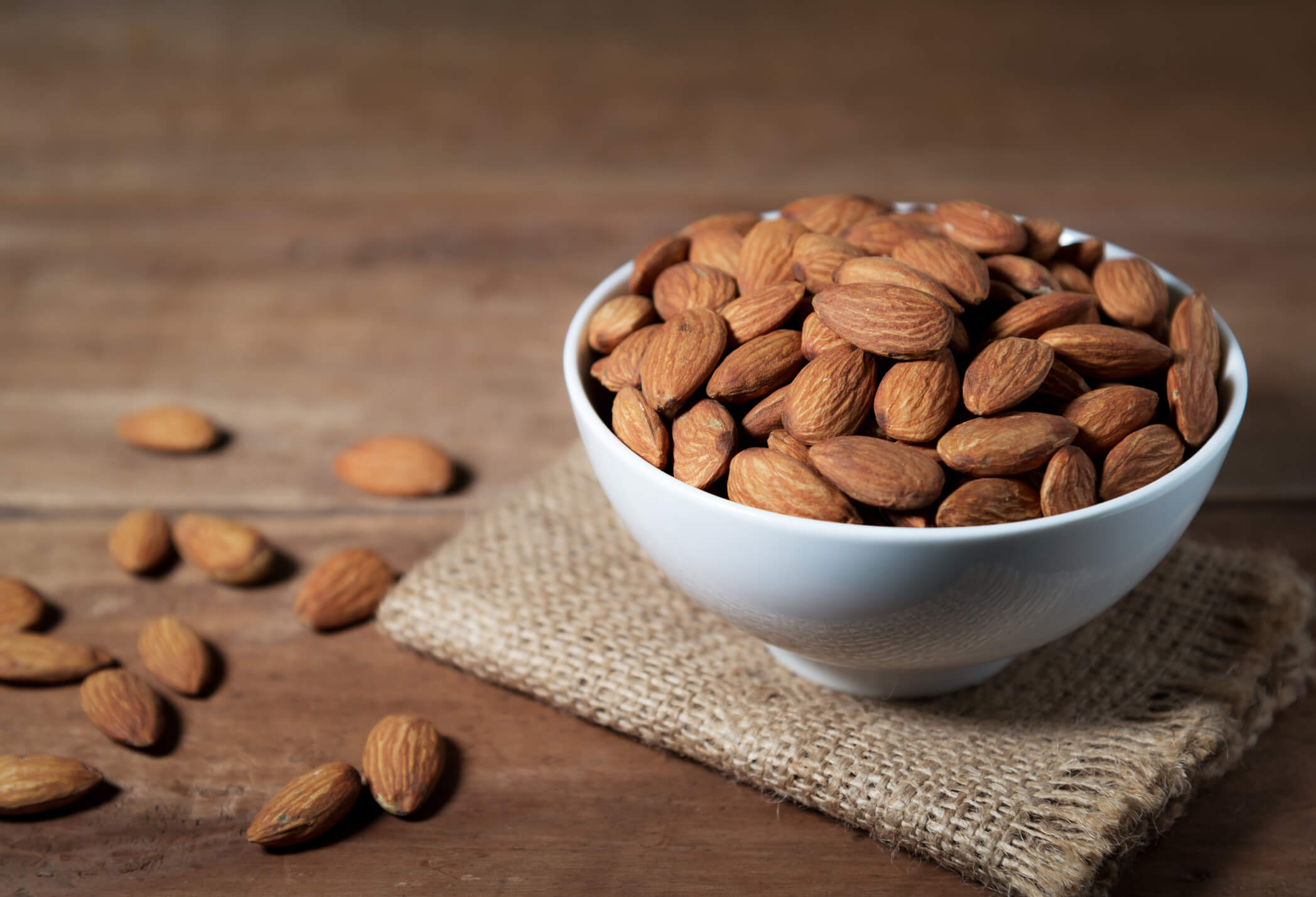
There is also a lot of fiber in almonds, and they could just as easily make a high fiber foods list with the amount of fiber they contain. Other notable highlights include calcium, iron, and potassium, even magnesium to help you sleep.
They have a high fat content, it is mostly healthy fat but you’ll still want to take it easy on them and not over consume them for their protein.
Opt for organic almonds to avoid pesticides and other chemicals that are present in conventional almonds. Also, stick with raw almonds over dry roasted, as these won’t contain added oil and sodium.
Ideas for eating more almonds: Almonds make the perfect anytime anywhere snack, but you can also chop them up and sliver them to mix in with vegetables, or to use in baked goods.
7. Sunflower Seeds – 21g per 100g
Sunflower seeds pack in the protein in a small package, and they’ll help boost your daily intake of protein in no time flat.
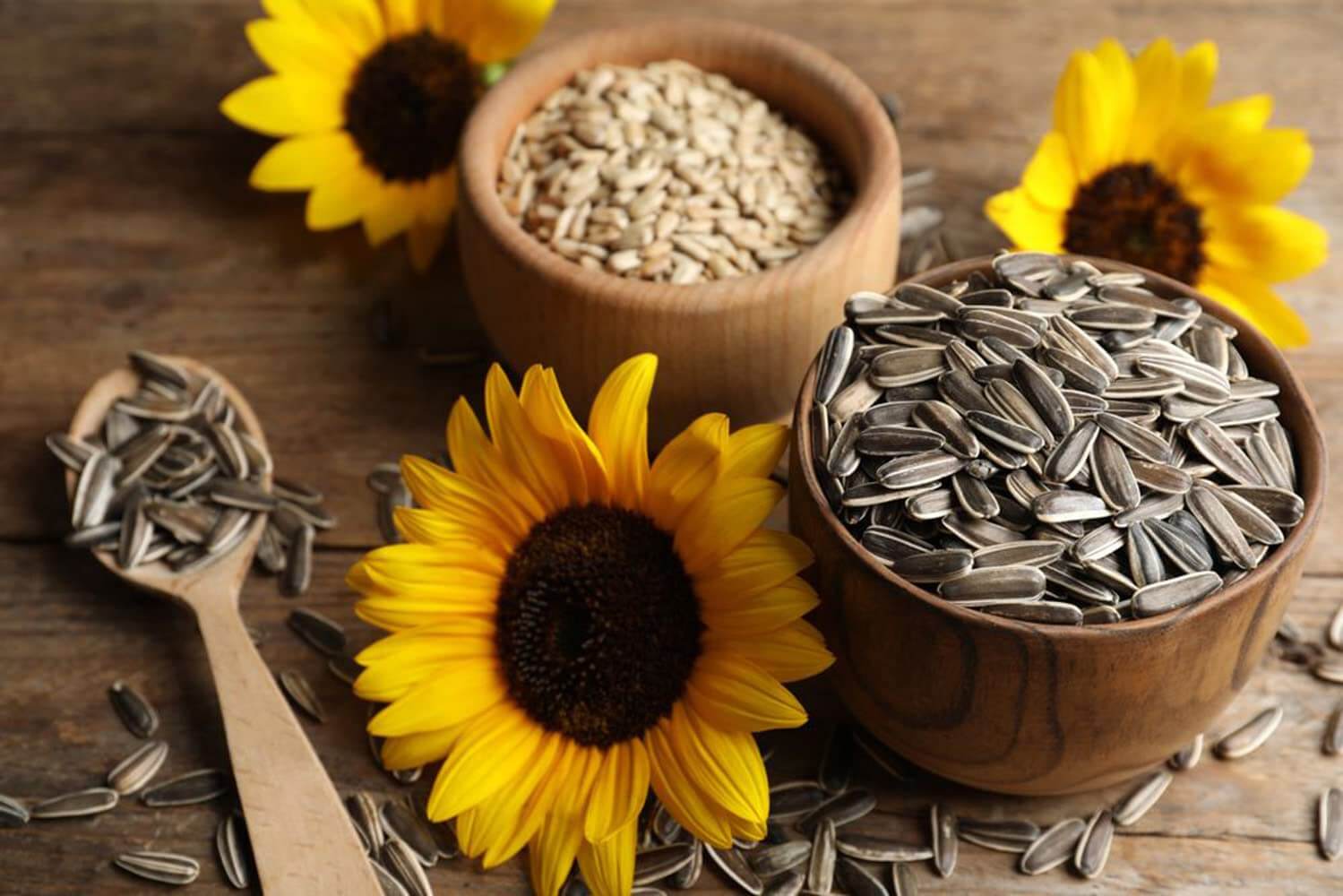
Sunflower seeds are emerging as a bona fide superfood for all of the benefits they provide. In addition to being high in protein they also help bring down cholesterol levels, and the magnesium they contain can help calm you down.
They also contain selenium, which could help prevent cancer. A handful of sunflower seeds can be taken with you anywhere, so use them as a way to hold you over between meals.
Ideas for eating more sunflower seeds: The number one way to eat sunflower seeds is on a salad, as they add a nutty flavor without being overpowering. You can also try sprinkling them on side dishes or main dishes to enhance the flavor and protein content.
8. Tempeh – 19g per 100g
Unless you’re a vegetarian or a vegan, tempeh has probably not been on your radar. But this is a popular choice as a meat replacement if you are looking to cut down on your cholesterol and sodium, but still want protein.
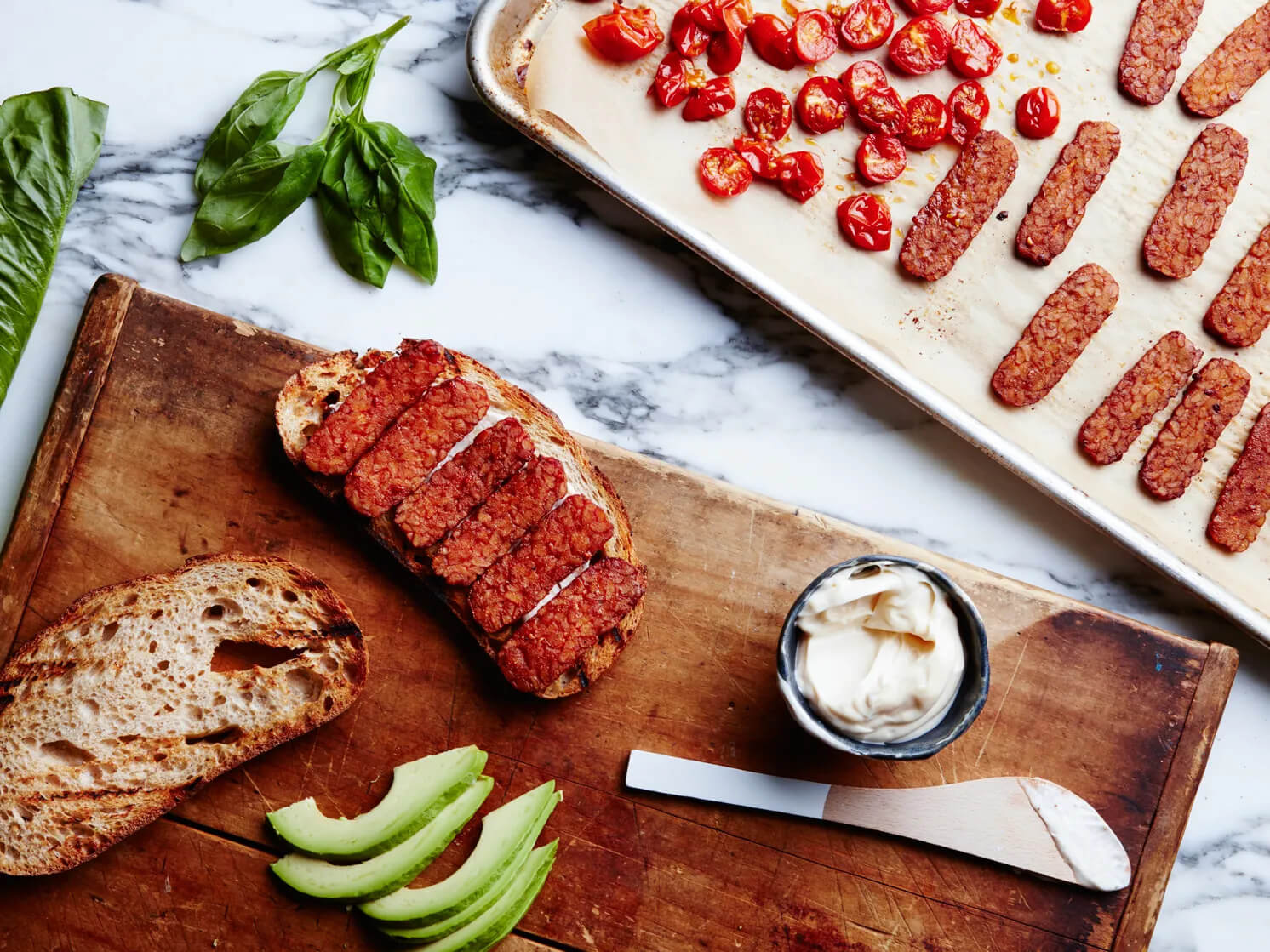
Tempeh is made from soy, and provides cardiovascular benefits thanks to the fermentation process. It’s also been noted as having anti-cancer properties. Truly this is one non-meat source of protein that is worth eating.
If you’re not familiar with how to prepare tempeh there are plenty of recipes online that will show you what you can do with it. There are even prepackaged tempeh strips you can buy to take out the guesswork.
Ideas for eating more tempeh: Tempeh makes a great stand-in for meat, so you can use it as a meat substitute for any dish that typically calls for meat. Tempeh Parmesan, Tempeh Burgers, and tempeh as a pizza topping are some ideas.
9. Quinoa – 14g per 100g
Quinoa has been in the national spotlight due to its healthy elements, and the fact that it’s gluten-free. It contains a substantial amount of protein for not being a meat, and that’s just one of the many features it has.

Quinoa is rich in nutrients, and contains all of the essential amino acids the body needs. This makes it a very well-rounded addition to your diet. It’s also full of fiber, potassium, and other minerals that will help you feel better overall.
There are many more benefits of quinoa, including it being low on the Glycemic Index, lowering your cholesterol, blood pressure, and blood sugar levels.
Ideas for eating more quinoa: A side of quinoa makes a great substitute for rice or pasta since it contains more protein, fiber, and minerals than those common side dishes.
10. Eggs – 13g per 100g
The incredible, edible egg makes it into the top ten for containing 13 grams of protein. While the debate still continues as to whether or not eggs are good for you, the protein they contain is undeniable.
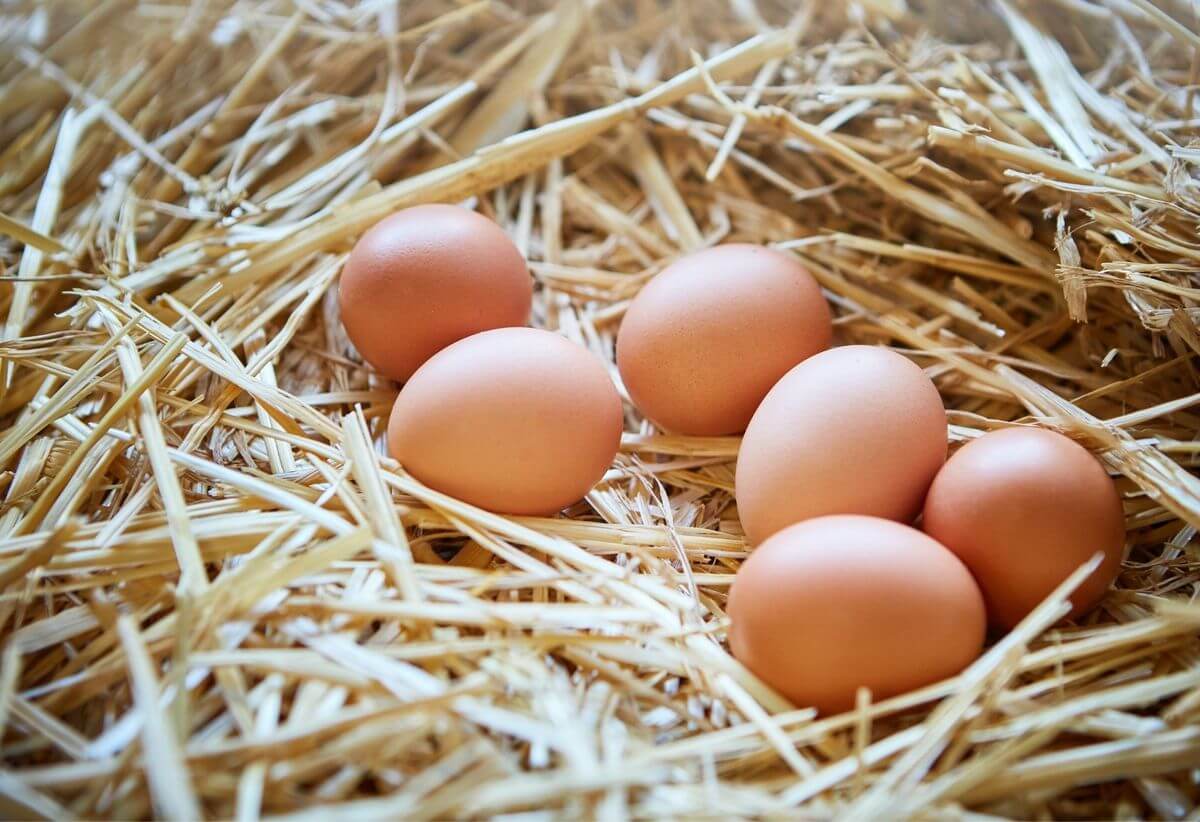
Strict vegetarians and vegans will opt out of eating eggs, but lacto-ovo vegetarians will consume them as they aren’t animal flesh.
You’ll need to eat two large eggs to get the 13 grams of protein listed here. You’ll also need to eat the entire egg to get the most protein from it.
Ideas for eating more Eggs: Eggs are one of the easiest and foolproof foods to make. It’s easy enough to cook up two eggs any style, or hard boil them so you can take them on the go.
They also factor into many baking recipes, and can be used in creative ways as a main dish like a quiche or in a casserole with other meat-free foods.
11. Cottage Cheese – 11g per 100g
Low-fat cottage cheese is often recommended on diet programs because it provides plenty of protein, without a lot of fat and calories. When paired with fresh fruit it provides a balanced meal of protein and carbohydrates.
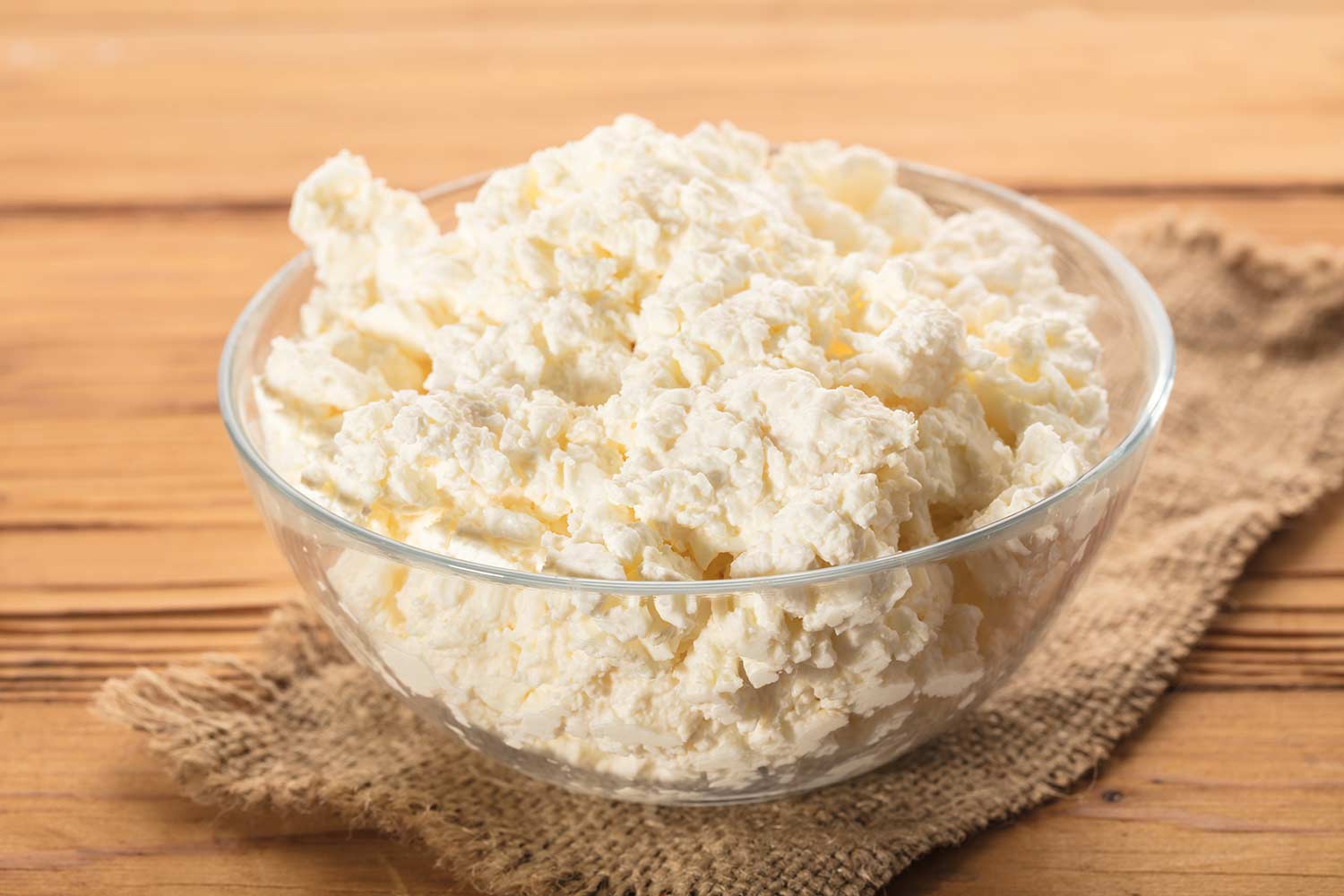
Cottage cheese also contains vitamins and minerals, but is a bit high in saturated fat so you won’t want to eat too much of it in an attempt to make up a lack of protein from not eating meat or cutting back on meat.
Vegans will of course take a pass on cottage cheese because it’s made from milk, and therefore an animal byproduct. Most vegetarians will eat dairy products,
Ideas for eating more cottage cheese: Cottage cheese is a popular breakfast food when eaten with fruit. But it also tastes amazing when eaten with spaghetti as it lends the taste of ricotta cheese with less fat and the same amount of protein.
12. Edamame – 11g per 100g
Edamame is the Japanese name given to green soybeans that have been picked prematurely and then boiled or steamed. They retain much of the protein content of soybeans, and take the 12 spot on our list.
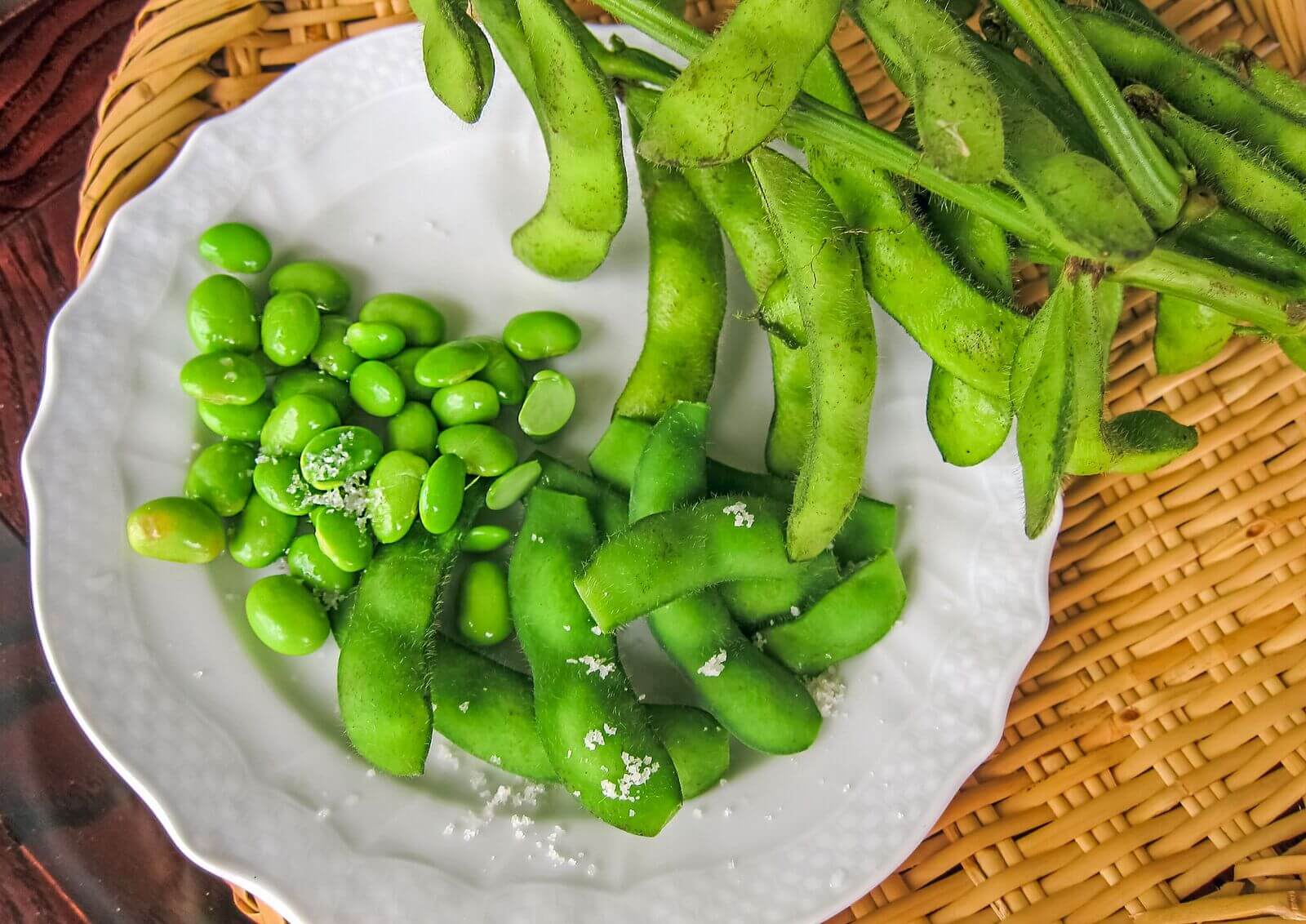
It contains healthy fats and nutrients, as well as isoflavones generally associated with soybeans, making it an all around healthy food in addition to the protein it provides.
Edamame is often served as a side dish in izakaya, drinking establishments in Japan that also serve food. In the states it has started showing up in restaurants as appetizers, and you can also find them in stores for use in recipes or as a side dish.
Ideas for eating more edamame: It’s a bit tough to make edamame into a main dish, so use it as an appetizer or snack before or between meals.
13. Greek Yogurt – 10g per 100g
Greek yogurt has surged in popularity over the past years due to its higher protein content, lower fat content, and ability to replace sour cream in a recipe.
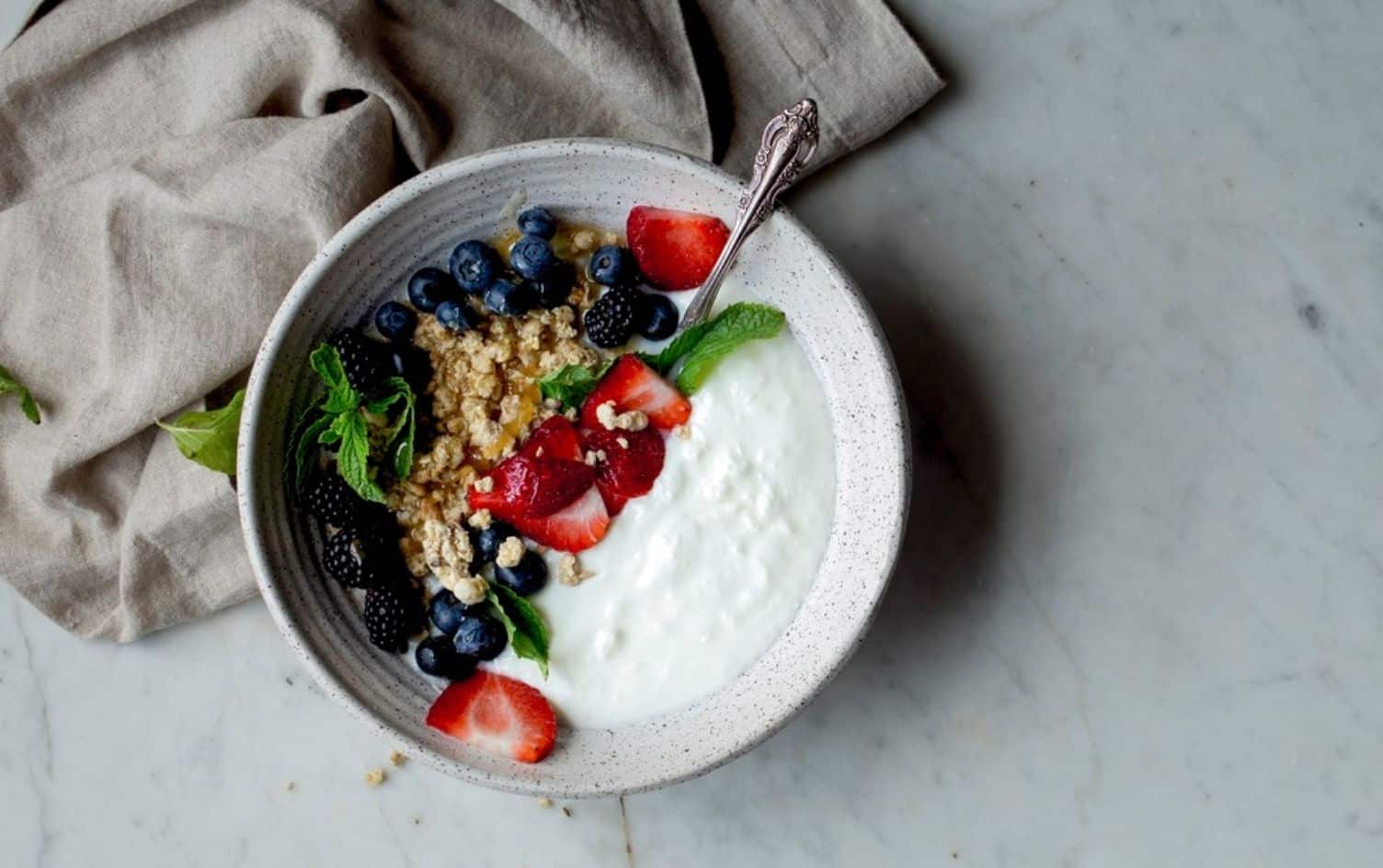
Greek yogurt can contain up to twice as much protein per 100 grams than regular yogurt. That’s why if you’re going to eat yogurt, you should make it Greek yogurt.
And if you’re going to eat sour cream, you should switch it to Greek yogurt if you’re trying to increase your protein intake, as it has nearly 5 times more protein than sour cream.
You can find Greek yogurt in several different flavors and varieties. We recommend going organic so that you know your yogurt was made from organic milk and will be free of antibiotics and growth hormones found in conventional milk.
Ideas for eating more Greek yogurt: Eat Greek yogurt with fruit or use it as a much better alternative to sour cream. It goes great with a meatless Mexican dish to give the taste and texture of sour cream with plenty more protein.
14. Tofu – 8g per 100g
The quintessential vegetarian food, tofu ranks surprisingly low in protein relative to the other foods on our list. It is easily the most often substituted item for meat, and has been popular in vegetarian cuisine for decades.
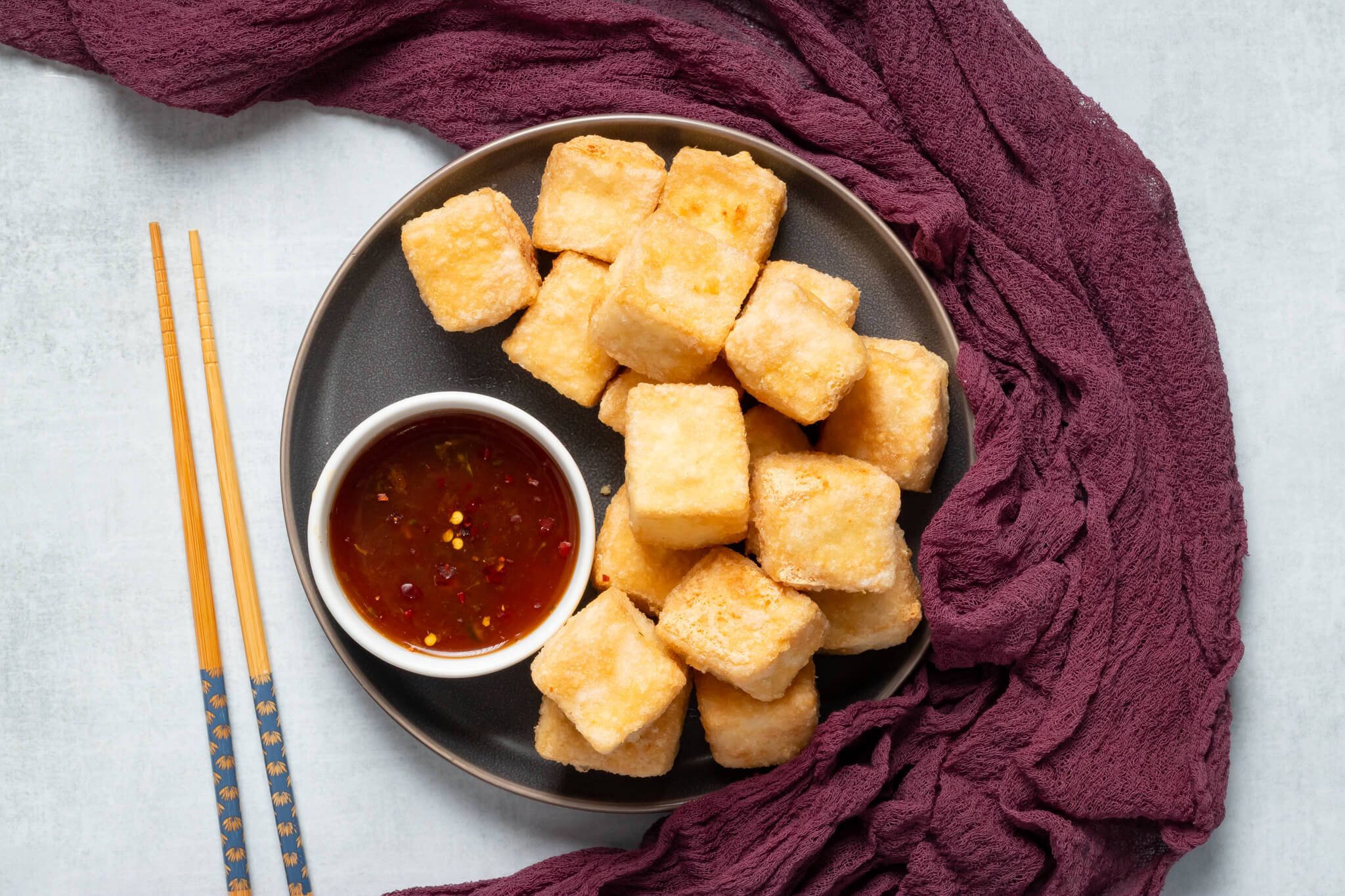
It has its origins in ancient China and comes in many different forms, tastes, and textures. Even though tofu is used to replace meat in many vegetarian dishes, its protein content is not as concentrated as chicken breast, beef, or fish.
So it’s not exactly the best at accounting for the loss in protein if you’re giving up meat completely. Consider some of the other meatless protein items like seitan or tempeh for more bang for you protein buck.
Ideas for eating more Tofu: Your imagination is the limit when it comes to tofu, as it can be used to swap out meat in just about any meat dish.
It can also be added to soups and stews, and is commonly eaten as a hamburger patty or a tofu dog.
15. Hummus – 8g per 100g
Hummus, the Middle Eastern dip made from chickpeas, is a very good source of protein, and can help round out your daily need for protein if you’re trying to get it from non-meat sources.
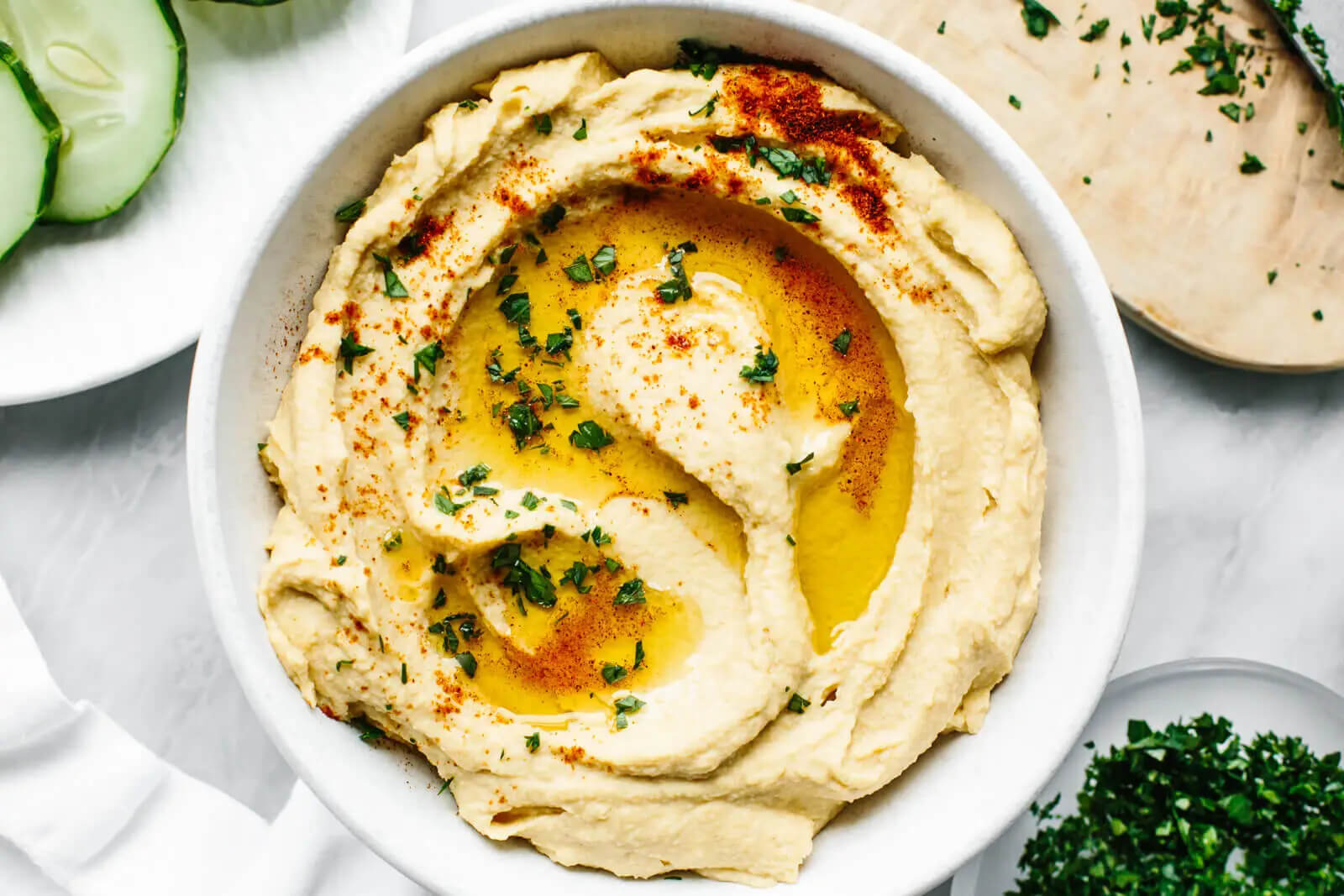
Hummus not only contains chickpeas, but also tahini, olive oil, and lemon juice, so it gets the nutritional benefit of these ingredients and makes it all very easy to eat.
These benefits include calcium, healthy fats, and antioxidants to help with a wide range of health issues. Eating chickpeas directly is a better way to meet your protein needs, but not quite as tasty in most instances.
Ideas for eating more Hummus: Hummus makes a great dip for just about any vegetable, and it also works well as a salad topper. Try using hummus instead of salad dressing to spruce up any salad.
16. Kale – 4.3g per 100g
Kale has been making waves in health food circles and is a fitting example of how powerful a vegetable can be. It contains enough protein to rank on our countdown, but kale alone is not enough to make up for not having meat. When combined with other high-protein meat-free sources you’ll have no trouble meeting your needs.

Kale is also high in fiber, and is a cruciferous vegetable, with research showing that it may be helpful in preventing cancer and other diseases.
There are a few different types of kale, so be sure you try each of them out to see which ones you like best. Curly kale is perhaps the most readily available, but give baby kale a try if you don’t like the curly kind.
Ideas for eating more kale: Bake up leaves of kale into kale chips. Season with your favorite seasonings and enjoy them like you would potato chips.
17. Milk and Soy Milk – 3.3g per 100g
Cow’s milk and soy milk have the same amount of protein per serving, so vegans can opt for soy milk, and ordinary vegetarians can go with cow’s milk.
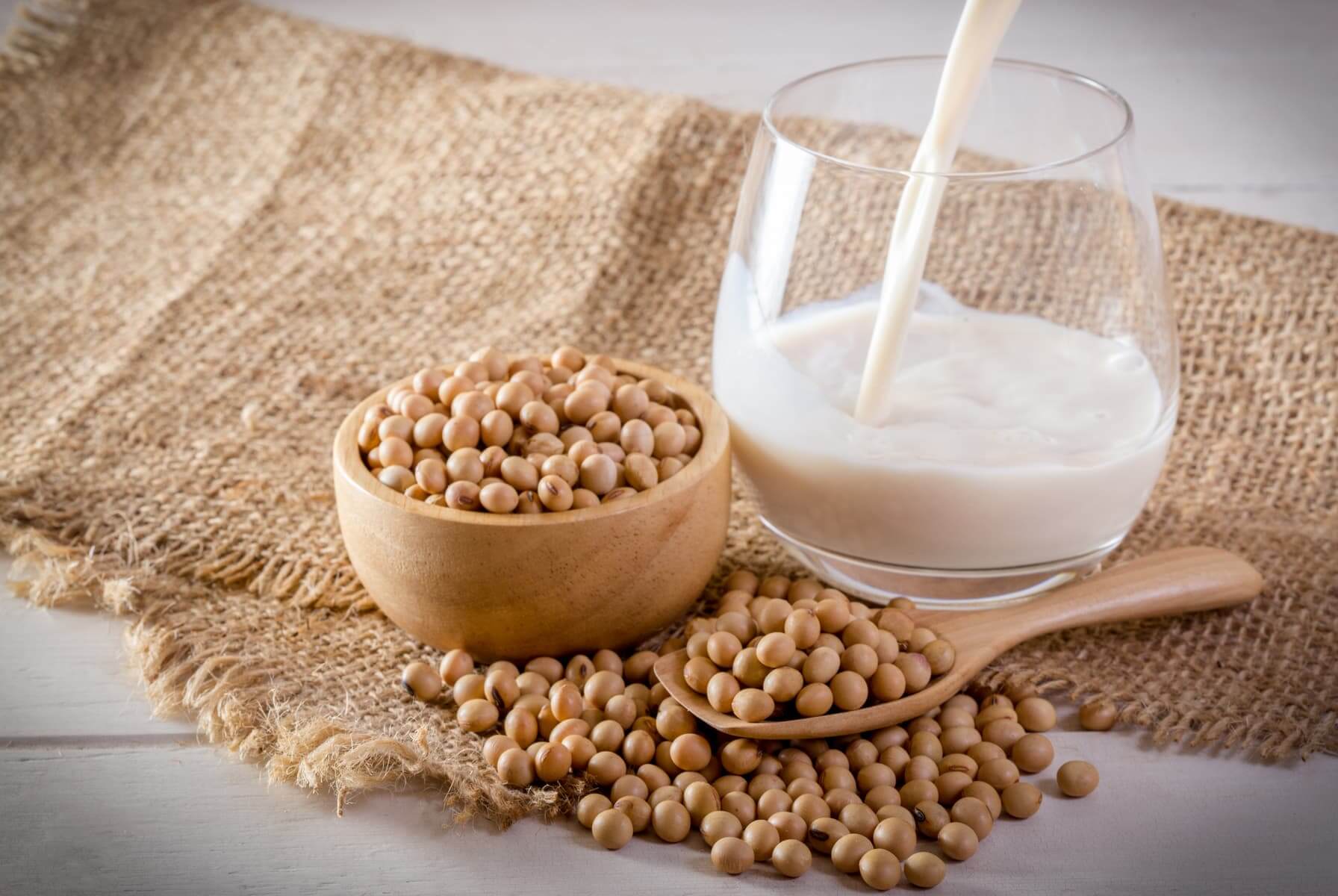
Both soy milk and skim milk have been used as part of a healthy diet to promote weight loss and both contain calcium for stronger teeth and bones. Since many recipes call for milk they’re both great ways to bump up the protein level without adding much in the way of fat and calories.
No matter which form of milk you go with, be sure it’s organic. You’ll be avoiding antibiotics and hormones found in ordinary cow’s milk, and you’ll be staying free of pesticides and herbicides used to grow conventional soybeans.
Ideas for drinking more milk: Use soy milk or cow’s milk in cereal, milk shakes, and hot chocolate. Soy milk makes a great substitute for any situation that calls for regular milk if you’d rather not drink cow’s milk.
18. Spinach – 2.9g per 100g
Popeye was onto something with his spinach intake, but protein is just one part of what makes it so healthy. In fact, even though it made our list of good sources of protein it’s not as if it’s a protein juggernaut, but it does contain enough to rank.

There are a few different types of spinach to go with, you can opt for baby spinach, or leafy spinach, fresh or frozen. Spinach goes great in a green smoothie, and tastes amazing as a pizza topping.
In fact, you can make an amazing meatless pizza high in protein by just using items found on this list. Spinach leaves are highly absorbent while it grows, which is why if you choose just one vegetable to buy organic, make it spinach.
Ideas for eating more spinach: Add spinach to any fruit smoothie to instantly turn it into a green smoothie, increase the amount of protein added, and get more vitamins and minerals.
19. Broccoli – 2.8g per 100g
You’ve likely known for a while that broccoli is one of the healthiest vegetables you can eat, but did you know that part of the reason is that it contains protein?

While it doesn’t provide enough protein to make a big dent in your daily needs, it is a respectable source of vegetable protein that can contribute to the bottom line.
Other facets of broccoli that make it so healthy are its fiber content and that it’s a cruciferous vegetable. Cruciferous veggies are always making the news for their health benefits, including helping to battle cancer and preventing heart disease.
Frozen broccoli is a great buy, since it keeps for extended periods of time and is ready in a jiffy just by steaming it.
Ideas for eating more broccoli: Broccoli usually gets relegated to a side dish, but it works great in veggie casseroles, soups, and even vegetarian chili. Make a high-protein soup with broccoli and other items listed on this page and you’ll have meatless dish you can use whenever you need a protein boost.
20. Avocado – 2g per 100g
While not the highest protein count for a meatless source of protein, avocados should not be overlooked. They’ll not only add to your total protein for the day, but they’ll provide other healthy benefits that will help facilitate healthy living.

Avocados are a great source of healthy polyunsaturated and monounsaturated fats, and have more potassium per gram than a banana. They’re one of the healthiest foods you can eat, and their protein content is only a small part of that reason.
Go with organic avocados whenever possible. They’re ready to eat when they’re soft, but be sure to use them up before they go bad.
Ideas for eating more avocado: Use avocado as an add-on to just about any meal. It makes a great palate cleanser between different side dishes and mains, while boosting your healthy fats, providing you with potassium and fiber, and of course a bit of protein.

